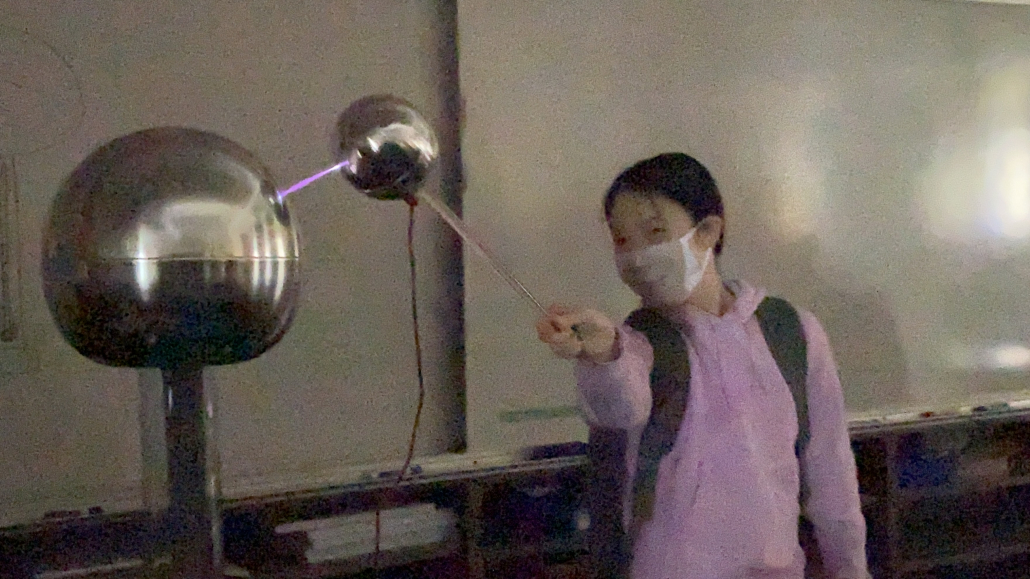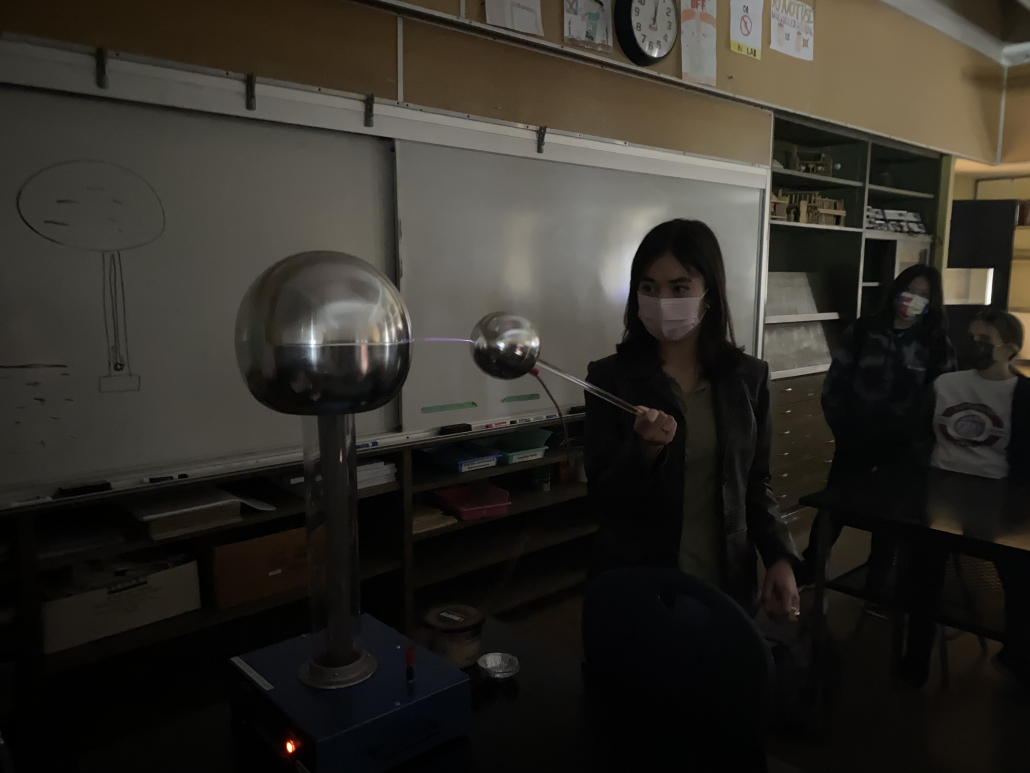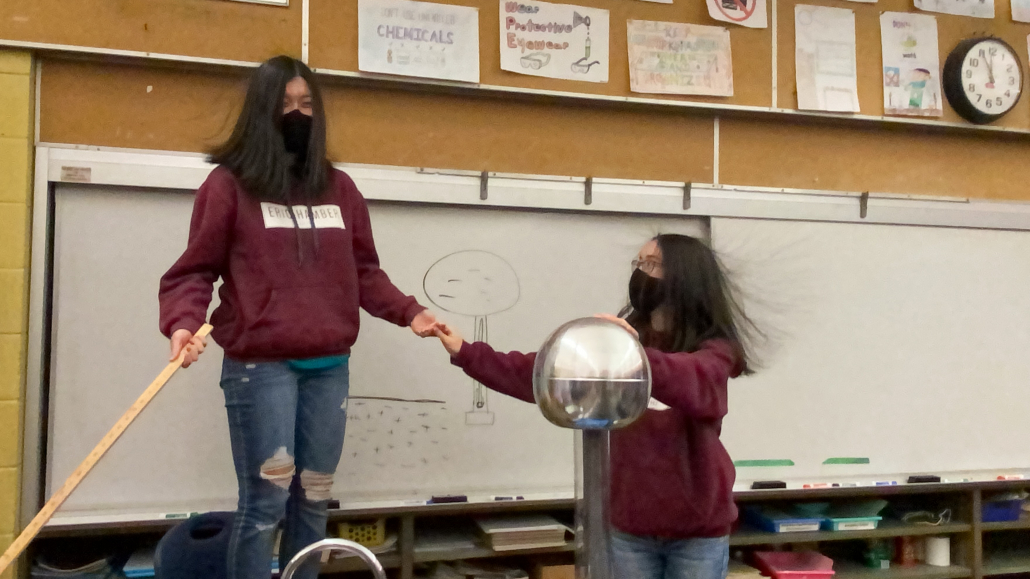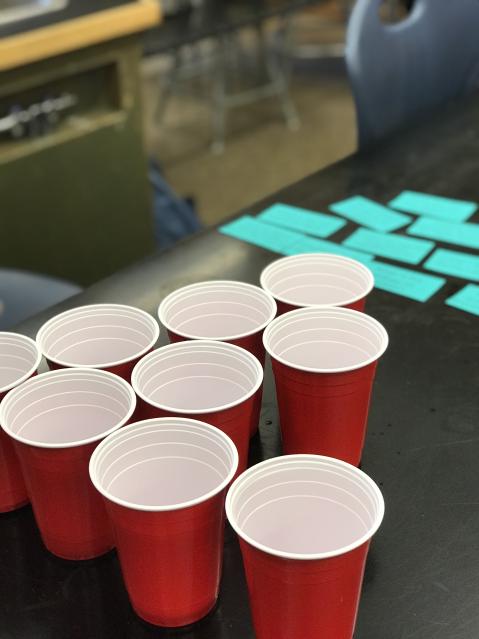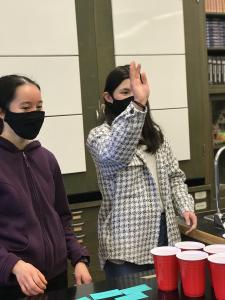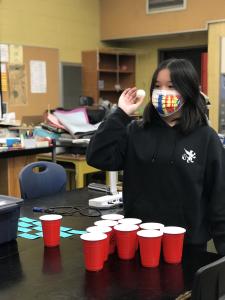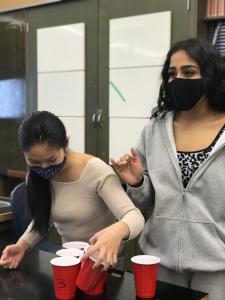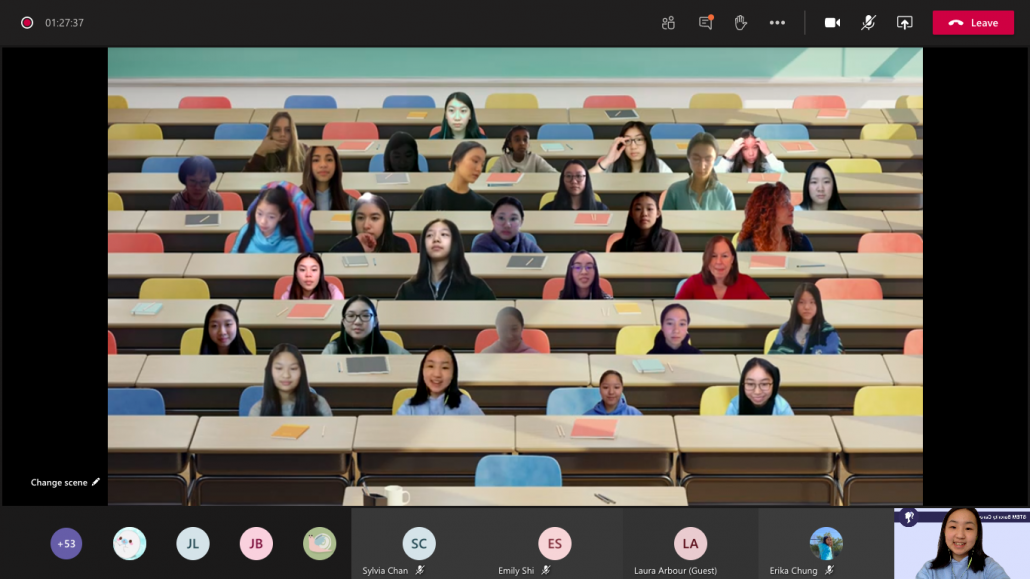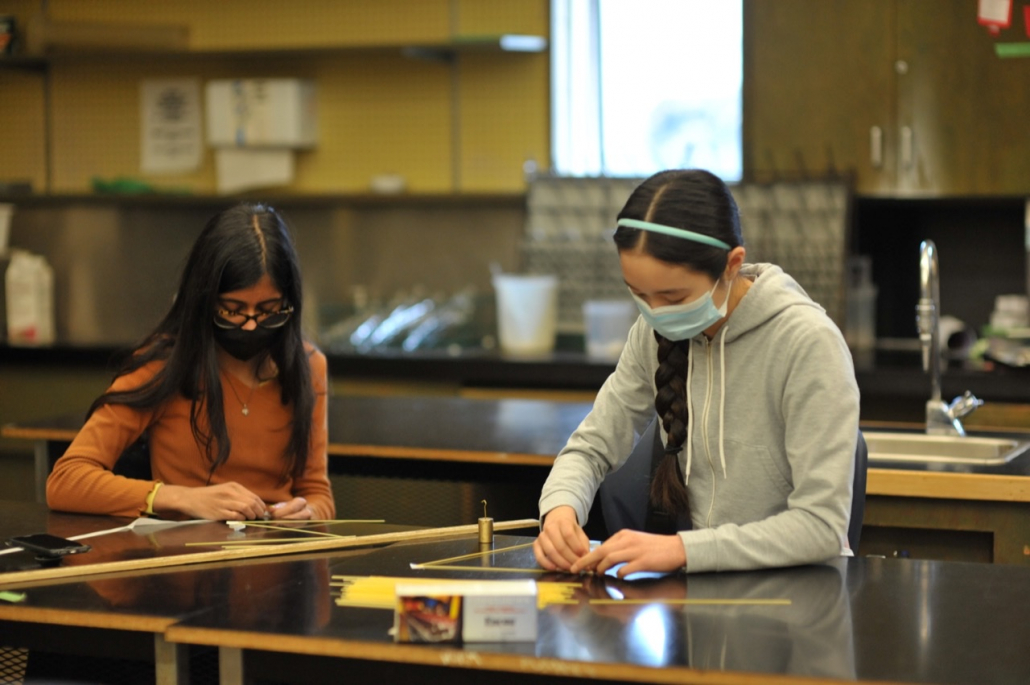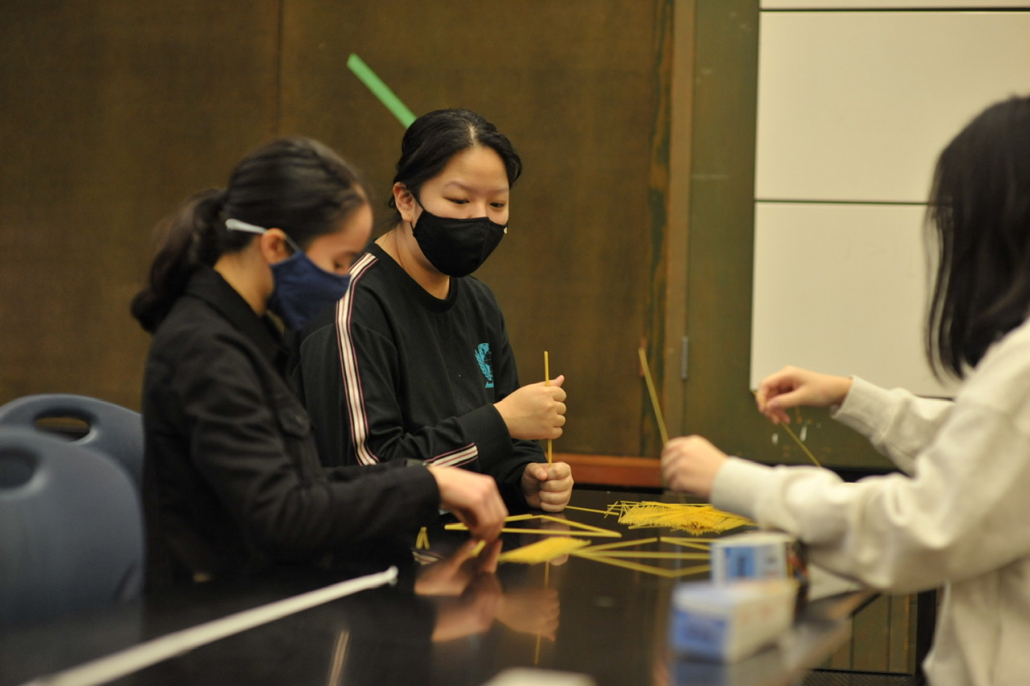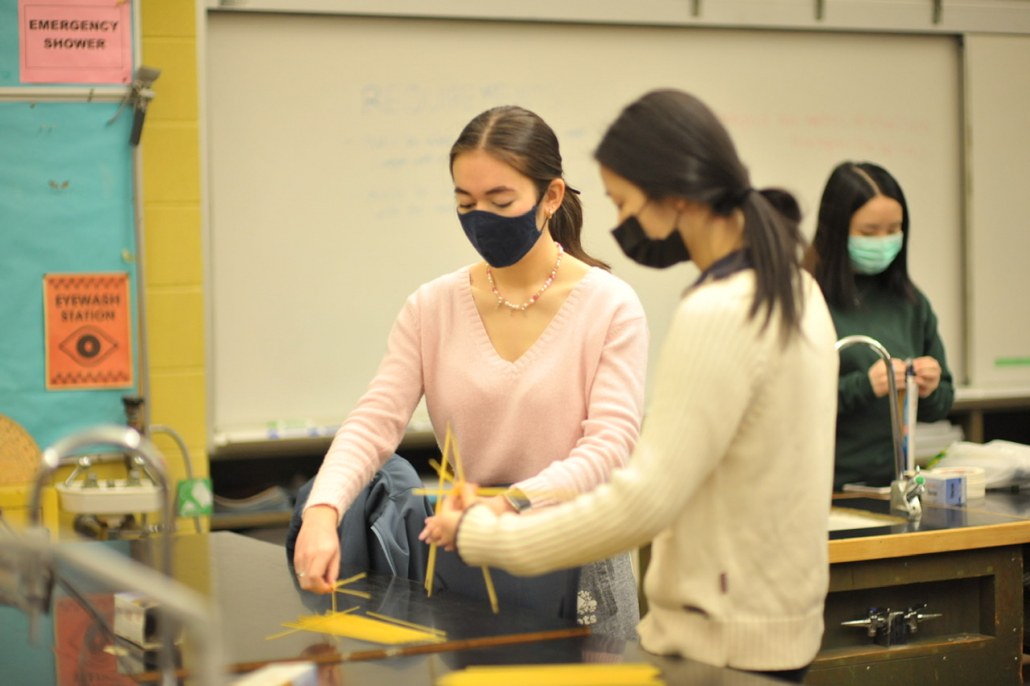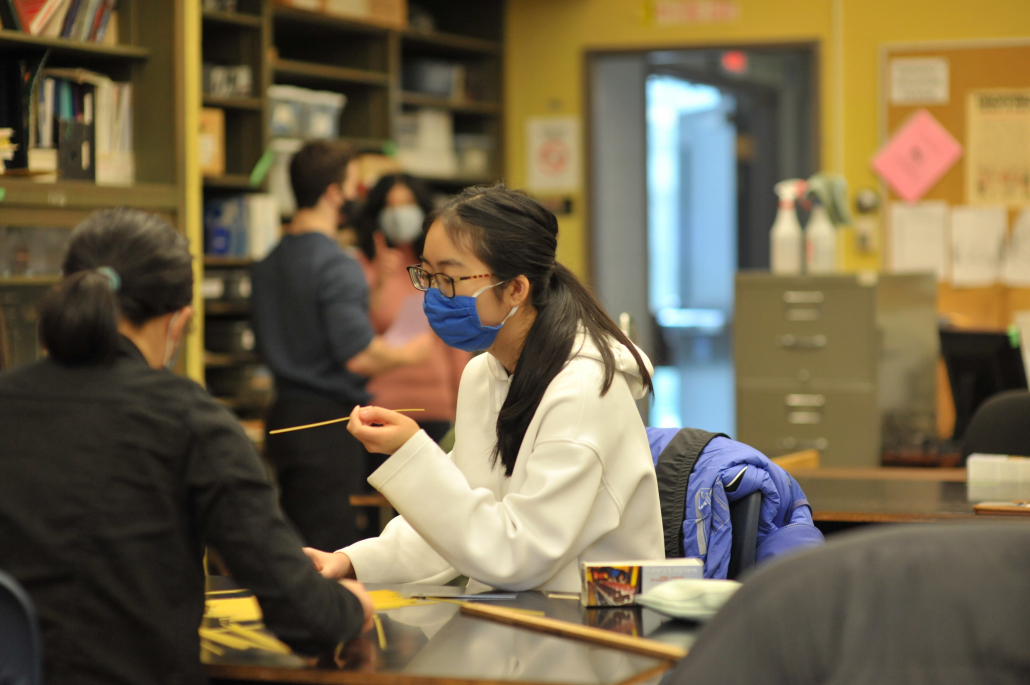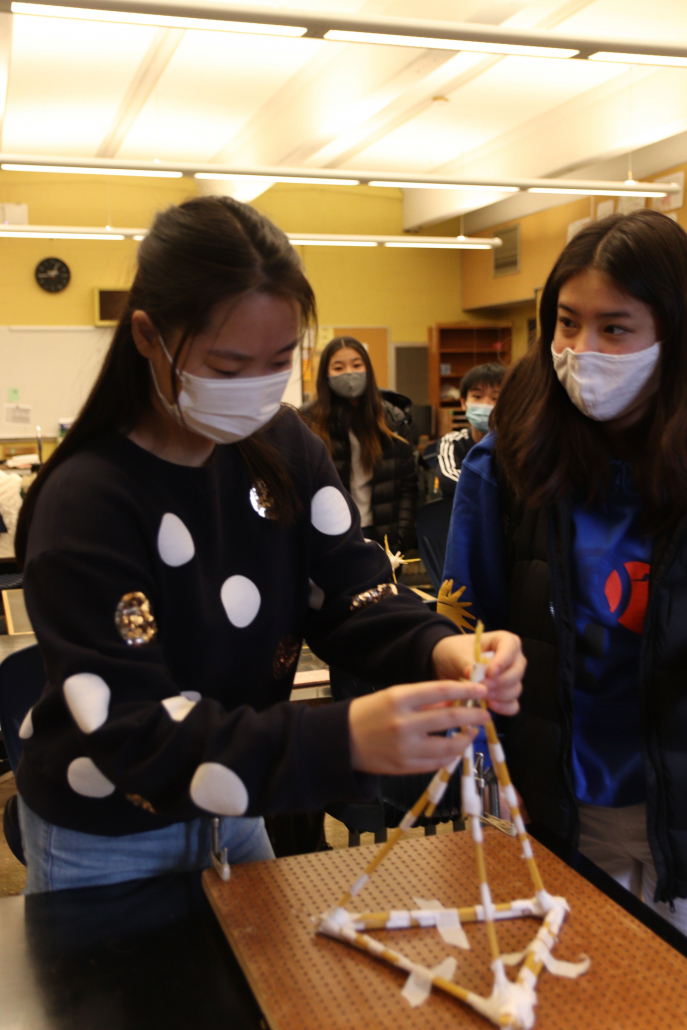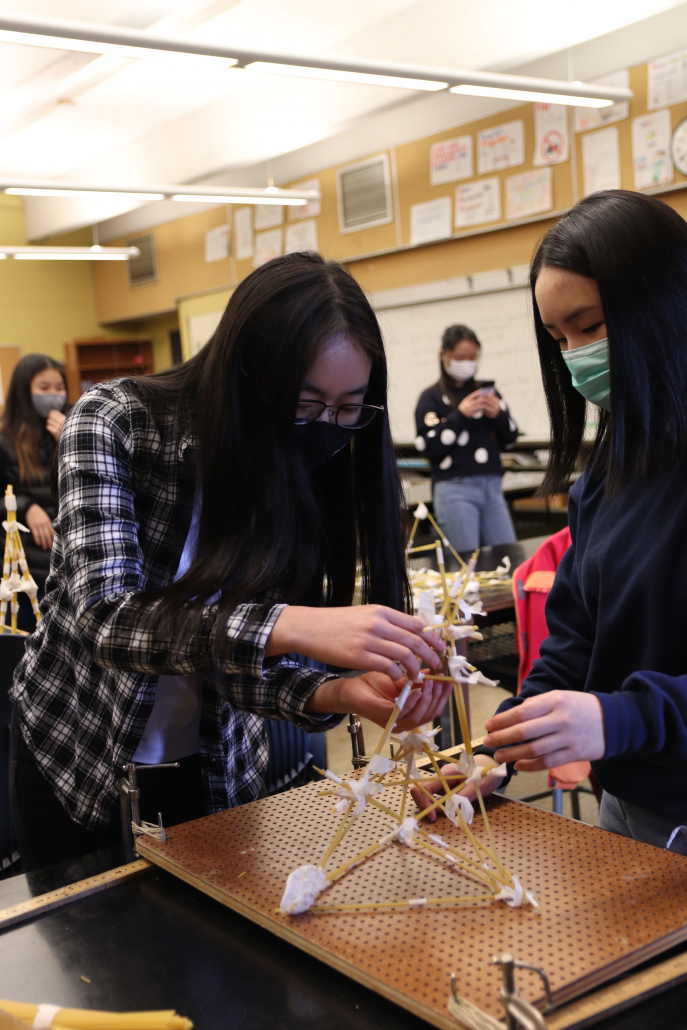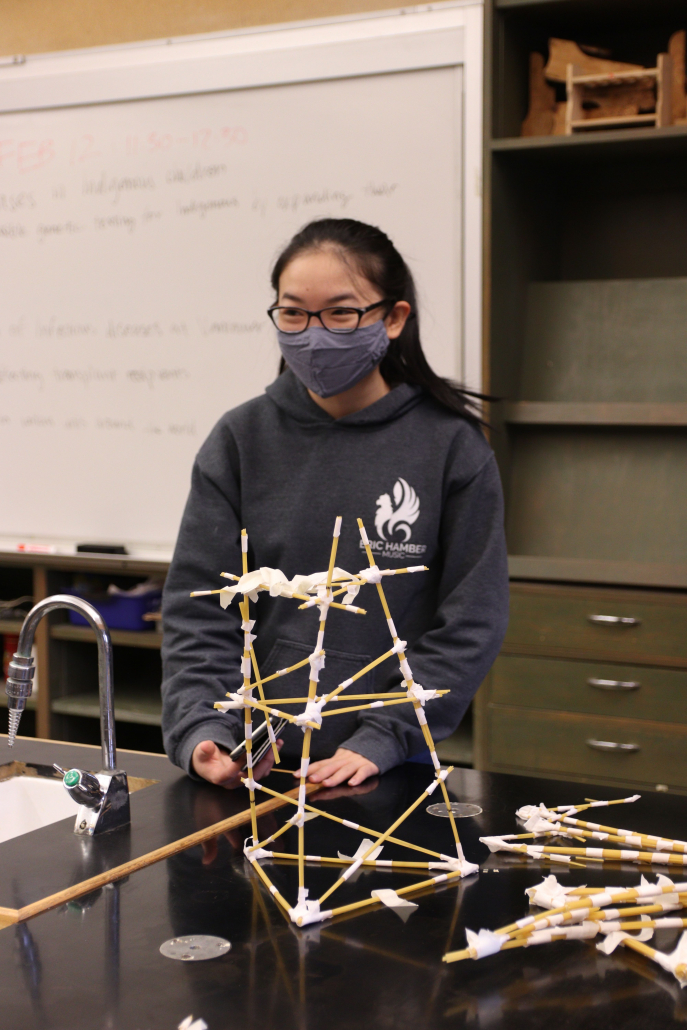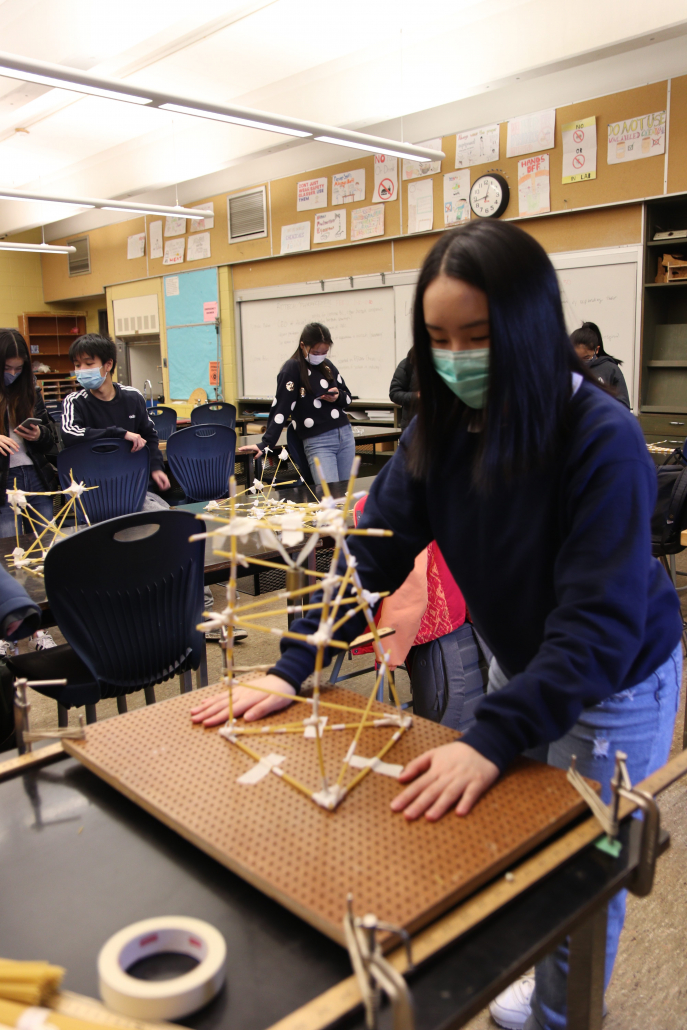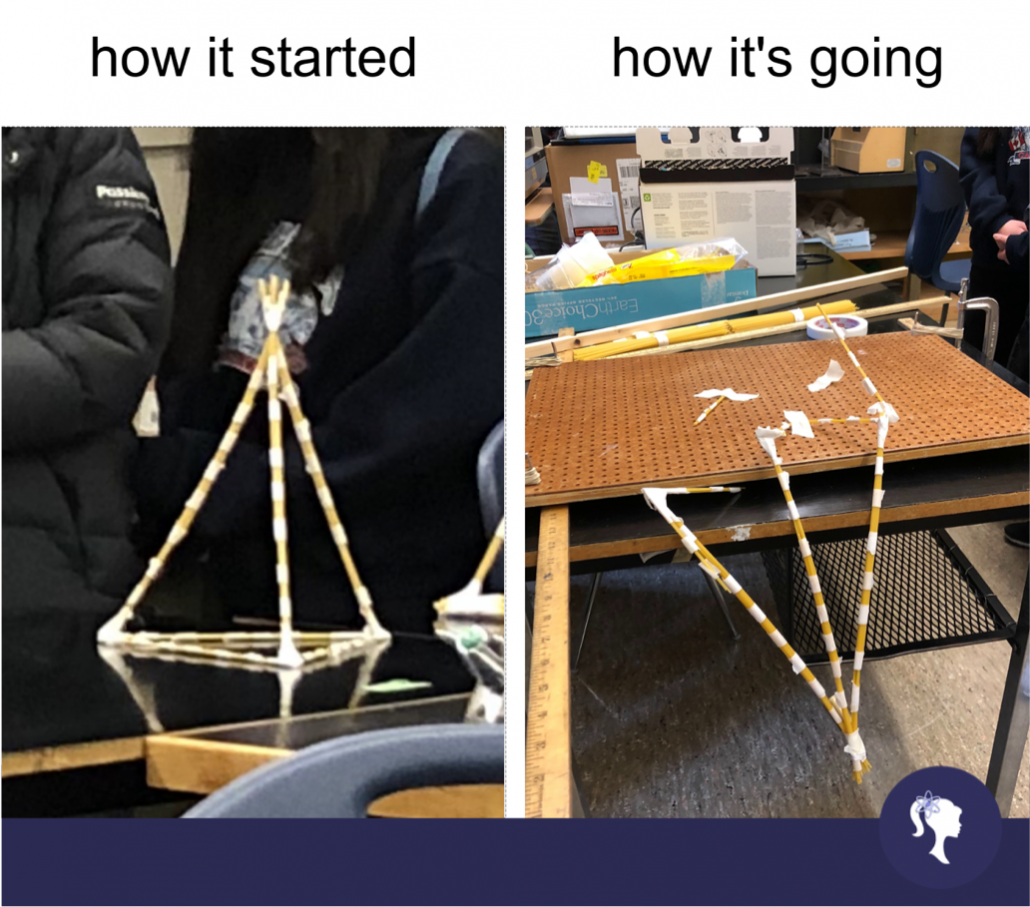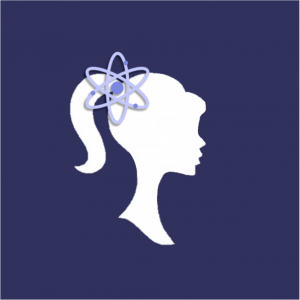STEM Sorority members were put into teams of 3-4 and challenged to create the safest egg drop structure they could with the following supplies:
- Rubber bands
- Popsicle sticks
- Marshmallows
- Straws
- Glue guns and sticks
- Balloons
Members came up with a variety of exciting structures; some constructed a popsicle stick cage stacked with marshmallows, wrapped the ball tightly in rubber bands, or created a balloon parachute for their egg. After two full days of work, all egg drop structures were placed in brown paper bags and dropped from 3 stories high. Here is a video of the results along with fitting music to commemorate the cracking of so many eggs:
Despite the many unfortunate egg deaths, this activity was a great way to showcase the creativity of STEM Sorority members and their athletic abilities as we raced around the school trying to find a classroom high enough to drop the eggs.

